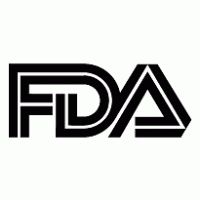FDA to Require Labeling of Sesame in Packaged Products Due to Food Allergy
A literature review summarized research on sesame allergies as the FDA begins labeling sesame as a major food allergen.

The US Food and Drug Administration (FDA) begins enforcing labeling of sesame in packaged food products this month, and the allergen now requires reliable identification and management, according to a recent literature review.
The decision effectively makes sesame the ninth major food allergen officially recognized by the US government, according to the FDA.
Sesame is now counted among the others on the FDA’s list, which include eggs, fish, soybeans, milk, wheat, peanuts, tree nuts, fish, and crustacean shellfish.
The crackdown on labeling sesame in packaged food products comes as a result of the Food Allergy Safety, Treatment, Education, and Research (FASTER) Act passed by the US Congress in 2021.
The literature review of articles on sesame allergies was led by Samuel Weiss, MD, of the Wilford Hall Ambulatory Surgical Center’s Department of Allergy/Immunology.
“In recent decades, understanding of sesame allergy has gone beyond case reports and case series to include better delineation of global prevalence, clinical presentation, natural history, and allergenic epitopes,” Weiss and colleagues wrote.
Background
The recent literature review ended up including research from 69 total articles on sesame allergies.
The reviewed articles that were selected from PubMed covered such topics as the allergy’s clinical presentation, allergenic epitopes, diagnosis, presence, natural history, and treatment.
In the investigators’ review, they utilized the search terms “sesame allergy” and “sesame seed allergy” to identify research applicable to their summary.
Findings
The investigators wrote that though sesame has become known as a dietary staple for many different countries, there now exists better delineation of the allergen’s presence worldwide, more knowledge of its clinical presentation, and its allergenic epitopes.
One study cited in the review indicated that only 43.8% of food products to which patients had reacted had reportedly been labeled with the word “sesame,” adding that they might have been labeled with the words “tahini” or “spices” or “natural flavor.”
Another notable fact included by the investigators was that the allergy appeared to present with anaphylaxis in 37.5% of patients initially, which was cited as a considerably large proportion.
Additionally, a cross-sectional study from Canada was also cited concluding that anaphylaxis had been the initial presentation of sesame allergy for 62.3% of children in the study.
The review’s authors also added that around two-thirds of those with sesame allergies will end up retaining the condition for most of their lives and that patients should work to manage the condition.
“One concerning finding in patients with sesame allergy is the rare use of epinephrine autoinjectors for moderate and severe reactions, even in patients who already possess these prescriptions at the time of initial presentation,” they wrote. “With growing recognition of sesame as a potential cause of allergic reactions, we can hope that awareness of appropriate treatments will follow.”
The literature review concluded that management is crucial for patients, with the investigators noting that a potential treatment option may be oral immunotherapy (OIT).
The investigators also added that research has led to speculation that those with allergies may be able to tolerate smaller amounts of sesame seeds that are intact and that exposure to this less allergenic form might eventually promote tolerance.
The FDA has reminded patients on its official food allergies page that allergic reactions to these kinds of allergens may be mild and include the swelling of lips or hives breakouts, but may also be more serious or even fatal, as can be the case with anaphylaxis.
The literature review, “Open sesame: Shedding light on an emerging global allergen,” was published online in Annals of Allergy, Asthma & Immunology.